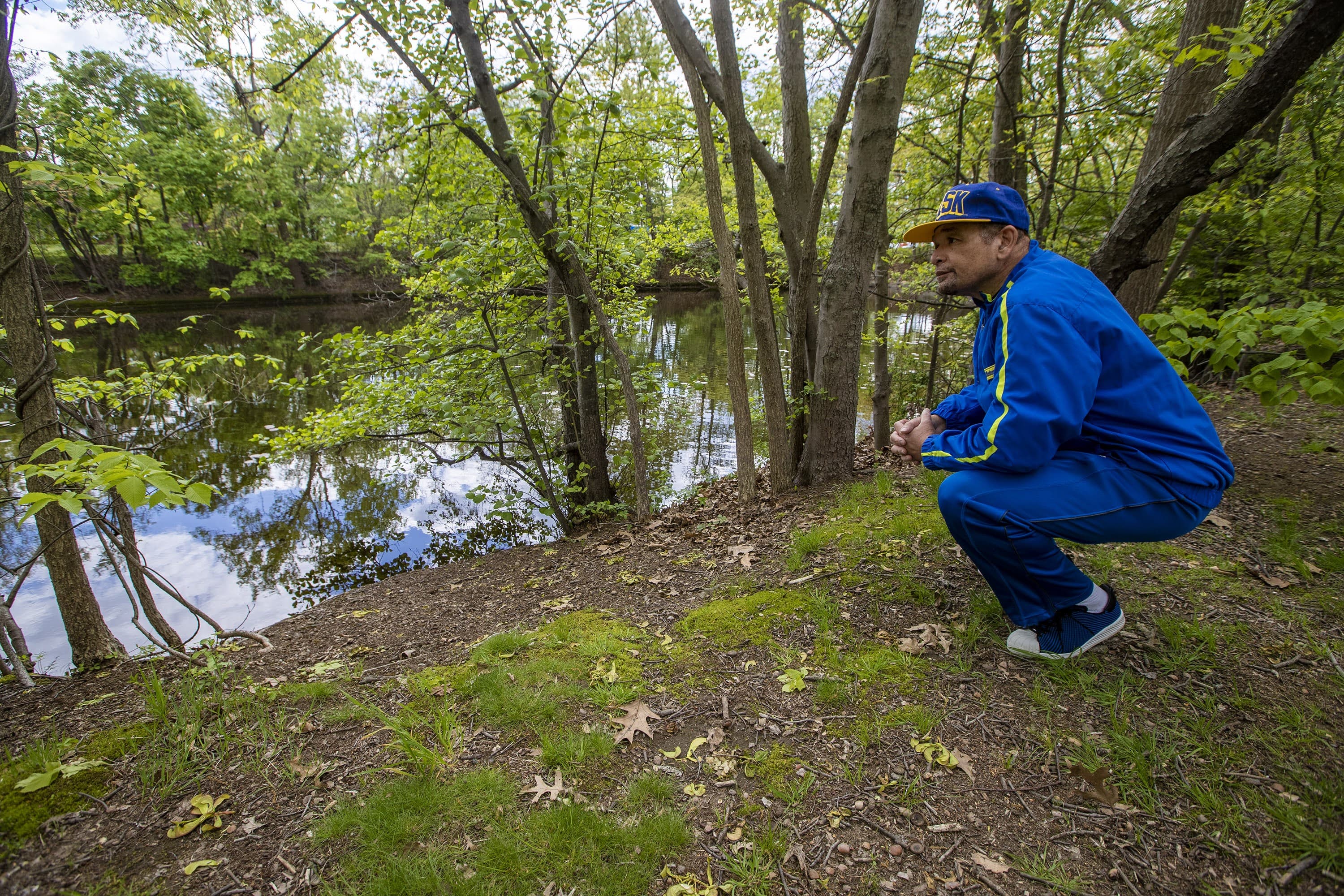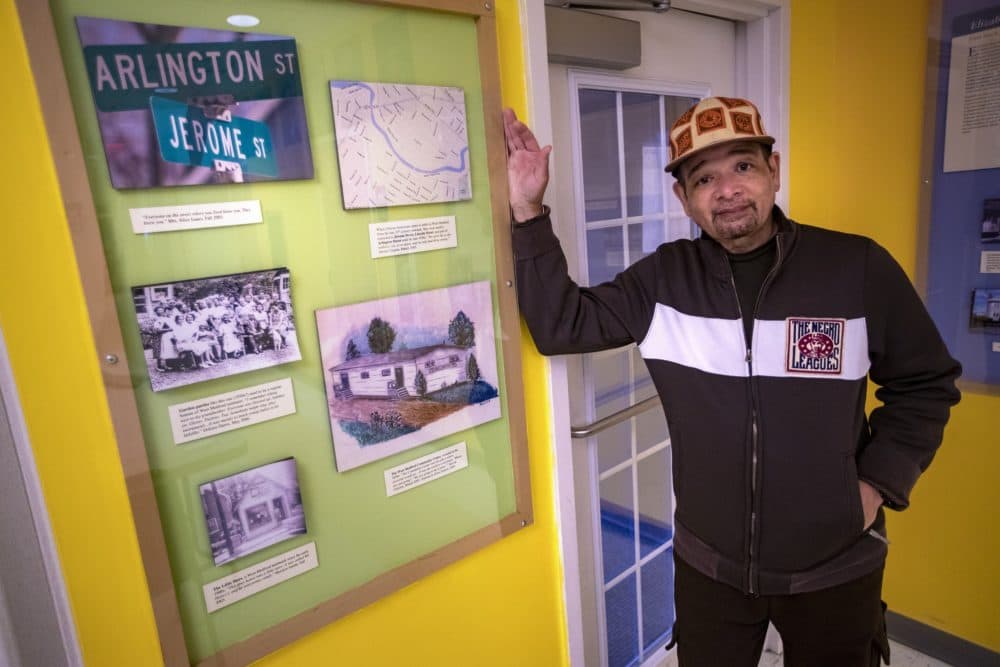Advertisement
An Art Installation Along The Mystic River Streams Sounds Straight Into Your Ears

Walk along the gravel path that winds beside the Mystic River, and you’ll probably notice, every so often, a sign stuck crookedly into the grass. “You’re walking inside a virtual audio installation!,” it cheerfully announces. Scan the QR code, and your headphones fill up with sound: a mournful cello, a cacophony of birds, the sudden gush of running water.
The installation you’re (virtually) walking through, “Sound On Mystic,” uses a smartphone app called ECHOES to trigger different recordings based on your location along the river. The app depicts the user as a small blue teardrop that crawls, beetle-like, from one highlighted section of the riverbank to the next. A little blurb pops up when you tap on the map to find out what you’re listening to.
“The installation is designed for movement,” says audio producer Ian Coss, one of the creators of the project. What path you take, and how quickly, determines what you hear, the soundscape shifting smoothly as you move from one sonic realm to the next.
“We're ceding a lot of that control to the user, which is part of the beauty of it,” Coss says.
Every piece in the installation was inspired by the Mystic River, which cuts through the heart of Medford. “[The Mystic River] is why the city of Medford exists where it is,” Coss says. “It’s tied to every aspect of the city’s history, for better and for worse.”
Coss, a recent Medford transplant, first approached the Medford Arts Council with an idea for an outdoor audio installation in 2019. Council members Dwayne A. Johnson and Gary Roberts joined him as co-creators of the project, and, with support from the Medford Arts Council and the Arlington Cultural Council, raised $7,500 to pay the artists and cover other expenses.
Out of over 70 applications, 14 artists and ensembles were chosen to contribute work. (Coss and Roberts also contributed.) The pieces range from poems to music to ambient soundscapes. The submissions that made it, Coss says, were the ones that related most directly to the river. “Each piece really does reflect not just the river in general, but this specific spot where the piece is located,” he says.
A composition by musician Derek Hixon, for instance, samples recordings from a nearby playground, transforming the shouts and footsteps of playing children into a propulsive beat. A piece by multidisciplinary artist Michael Dewberry remixes field recordings from where the river crosses busy Medford Square.
Advertisement
Other artists took a more personal approach.

“This is kind of halfway between the two spots where I grew up playing in. So it holds a lot of memories for me,” says Terry Carter. Carter, Medford’s poet laureate, stands in a park next to the Mystic River, near where he grew up in the city’s historically Black neighborhood. Back then, the river was so polluted you could smell it. "It smelled like rotting stuff, decaying stuff," Carter says.
For a long time, this neighborhood was the only part of town where African-Americans were allowed to live.
“They thought that this was the worst part of Medford,” Carter says. “And that’s why they confined Blacks here.”
In his poem “Hard By the Mystic,” Carter laments the change brought to the neighborhood by gentrification. But the piece, he says, is primarily about how the West Medford African-American community thrived in the face of discrimination. “But we named it/ We claimed it/ We made it our own,” he declares in the poem’s refrain.
Carter’s is not the only piece to scrutinize Medford’s past. Many artists saw the project as an opportunity to uncover regional history that’s often ignored.
Erin Genia, a Medford-based artist and tribal member of the Sisseton-Wahpeton Oyate of South Dakota, enlisted her three children in a piece that explores the area’s indigenous history.
Genia’s 16-year-old daughters, Ruby and Alex, wrote a script, and her 20-year-old son, Sam, designed the sound and composed music for the piece. “Continuity” recreates the family’s walks along the river. The sisters muse about what the area might have looked like before European settlers came, and then stop to read — and critique — a historical marker near the path.
“The sign said that it was Nipmuc territory, but it’s Massachusett territory. So it’s incorrect in that way,” Ruby says in an interview. The marker also uses the racial slur “squaw, ” "a really offensive and sexist term for a female chief," Ruby says.
"That sign kind of brings attention to the fact that not a lot of people actually know the hidden history behind this area," Alex adds.
For their mother, the installation is an opportunity to correct the record.
“As a Native artist, I’ve found that there is so much ignorance about Native people,” she says. “Particularly in the public realm, where largely indigenous peoples have been erased or mythologized.”
The beauty of a virtual installation, Genia says, is that it meets us where we already are — inside our earbuds with our noses in our phones. “Sound On Mystic” invites the surrounding world in. And so a solitary experience becomes, unexpectedly, communal.
"Sound On Mystic" is along the Mystic River in Medford and Arlington available through 2021.
This article was originally published on May 24, 2021.
This segment aired on May 24, 2021.
